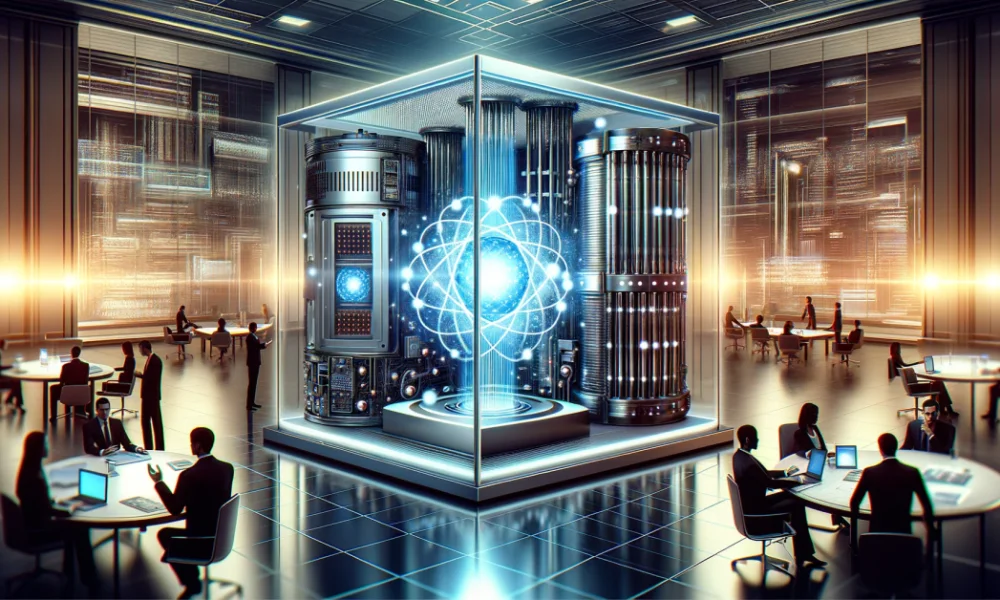- INTRODUCTION
Artificial Intelligence (AI) is already a big part of our everyday lives. You may use it when you get suggestions from Google, talk to chatbots like ChatGPT, or create images with tools like DALL·E. However, quantum artificial intelligence is a new technology that is coming soon. Artificial intelligence and quantum computing are two potent technologies that are combined in quantum AI. AI is like the brain, helping machines learn, solve problems, and make decisions. Quantum computing, on the other hand, offers powerful processing speed, making tasks much faster. Together, they form a super-advanced tool that could change the future of technology.
Both artificial intelligence (AI) and quantum computing are revolutionary technologies. Quantum AI, the intersection of these two fields, is seen as the next major breakthrough. According to Hartmut Neven, head of Google’s Quantum AI lab, he believes AI can become even more powerful with the help of quantum computers.
- WHAT IS AI?
AI is software that mimics human thinking. It can recognize patterns, understand language, and even generate new content. For example, generative AI tools like ChatGPT or Midjourney can create text, images, or sounds based on the data they were trained on.
These AI tools are trained on large amounts of information using classical computers—the same kind most people use. But traditional computers process tasks step by step, which limits their speed. That’s where quantum computing comes in.
- WHAT IS QUANTUM COMPUTING?
Quantum computers are different from regular computers. They don’t just use bits (which are either 0 or 1). They use qubits, which can be both 0 and 1 at the same time, thanks to a property called superposition.
Another unique property is entanglement. Even if two qubits are far apart, altering one immediately impacts the other when they are entangled. These two features help quantum computers solve problems much faster than classical computers.
Quantum computers are still in their infancy, though. They are large, fragile machines that need very cold environments to function. That’s why they aren’t common yet. Still, big companies like Google, IBM, Microsoft, and Amazon are working hard to improve them.
- CHALLENGES AND POSSIBILITIES
According to some, quantum AI is currently just hype. The technology still has many challenges, like hardware instability and the need for special algorithms. However, researchers are making progress in solving these issues.
Although fully developed quantum AI may be years away, it has the potential to improve many industries. For example, it could help with:
- Faster training of AI models
- Better pattern recognition in images, language, or numbers
- More accurate decision-making in health care, finance, and climate science
- Creating even more realistic content with generative AI tools
In the future, quantum AI could help us solve complex problems quickly, making huge breakthroughs in fields like medicine, cybersecurity, and transportation.
Quantum AI: What It Is and How It Works
Artificial Intelligence (AI) is already a big part of our everyday lives. You may use it when you get suggestions from Google, talk to chatbots like ChatGPT, or create images with tools like DALL·E. However, quantum artificial intelligence is a new technology that is coming soon.


